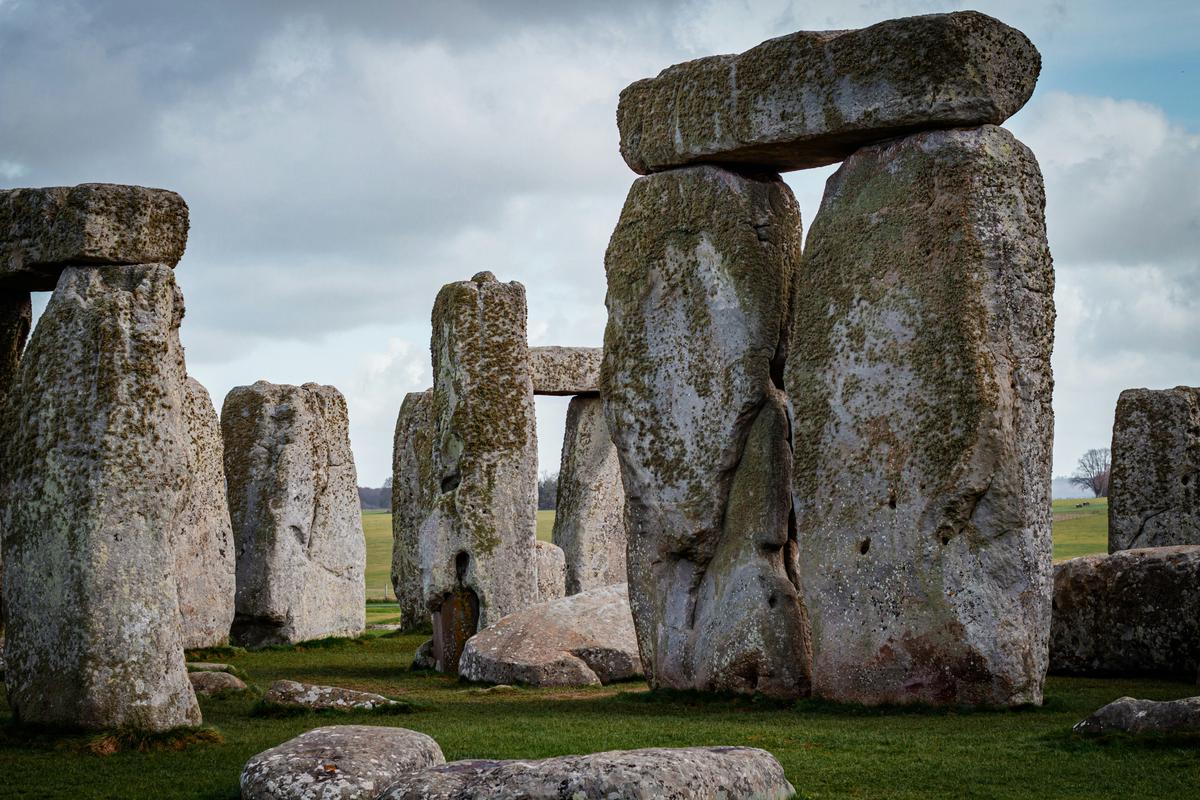Prehistoric Pathways
The Ridgeway, dating back at least 5,000 years, is an ancient pathway across southern England’s chalk ridges. This route connected the Dorset coast to the Wash in Norfolk, used by prehistoric travelers.
The Ridgeway’s landscape contains evidence of ancient communities through Neolithic long barrows, Bronze Age round barrows, Iron Age hill forts, and Anglo-Saxon era remnants. These sites demonstrate its long history of use and are part of Britain’s archaeological record.
Trade occurred along the Ridgeway, with its high vantage points providing safety for traders carrying goods like obsidian and furs. During times of conflict, Iron Age hill forts along the route served as defensive positions and community centers.
In the Middle Ages, the Ridgeway became a route for herding livestock along its lengthy stretches. Today, as a National Trail, it allows hikers to walk along its 87-mile path, connecting them to Britain’s past inhabitants.
The Ridgeway provides a link to Britain’s history, connecting notable sites like Avebury, Barbury Castle and the Uffington White Horse. Walking this ancient trackway allows one to experience Britain’s landscapes and its archaeological past.
Uffington White Horse
The Uffington White Horse
The Uffington White Horse, carved into the Oxfordshire landscape, is one of Britain’s oldest and most mysterious ancient figures. Dating back around 3,000 years to the late Bronze Age, this chalk figure stretches 110 meters and is a significant monument along the Ridgeway.1
Historical Background
The Uffington White Horse is the oldest hill figure in Britain, confirmed through silt analysis.2 Created by digging trenches and filling them with chalk, its construction required substantial community effort, suggesting its importance to ancient peoples.
Archaeological Significance
The horse provides a connection to past ritualistic practices and beliefs. Its careful maintenance through centuries highlights its ongoing significance. The White Horse’s location offers a wide view, connecting prehistoric sites like Wayland’s Smithy and Barbury Castle.
Tales and Theories
Various theories exist about the White Horse’s origins, from an astronomical calendar to a religious monument. Local folklore even suggests it’s a petrified dragon. Its preservation efforts connect past and present communities in a shared act of stewardship.
Conclusion: An Enduring Legacy
The Uffington White Horse has endured through time, serving as a landmark for those traveling the same lands once traversed by their distant ancestors. It is a striking reminder of humanity’s desire to leave a lasting mark on the landscape, resonating through the ages as a symbol of our shared heritage.

Avebury and Neolithic Sites
Avebury and the Neolithic Sites of the Ridgeway
Neolithic sites like Avebury dot the Ridgeway’s landscape, revealing stories of prehistoric Britain. These ceremonial sites contribute to the historical narrative of this ancient pathway, enhancing our knowledge of our ancestors’ world.
Avebury: A Gathering Place Across Millennia
Avebury, a large stone circle in Wiltshire, represents a landscape shaped by human hands over 4,500 years ago.3 Part of a larger ceremonial landscape, it indicates a focal point of human activity and celestial alignments. Avebury demonstrates the interconnectedness of ancient sites along the Ridgeway, showing a combination of everyday and spiritual concerns.
Significance in Prehistoric Context
Neolithic landmarks along the Ridgeway create a rich tapestry of ancient Britain’s architectural achievements and ceremonial spaces. Their concentration suggests a deliberate pattern reflecting celestial phenomena and terrestrial topography. These sites were points in an extensive network enabling travel, trade, and rituals.
The Significance of Interconnectedness
Avebury and its counterparts are linked by the Ridgeway, creating a pathway of continuity for religious practices and cultural exchange. This network reveals an interconnected prehistoric society where geographic markers held spiritual significance.
A Legacy Preserved in Stone
Avebury and other Neolithic sites along the Ridgeway invite us on a journey through space and time. They stand as lasting reminders that the fabric of human history is woven from the shared spirit of community and continuity across generations, adding to the historical significance of the Ridgeway.

Photo by _priyank007_ on Unsplash
Iron Age Hill Forts
The Iron Age Hill Forts along the Ridgeway
Iron Age hill forts sit atop the chalk hills of the Ridgeway like crowns of a past era. These ancient strongholds, like Uffington Castle, are important elements in the architectural and historical narrative of Britain’s landscape, delving into the Iron Age.
The Strategic Position of Iron Age Fortifications
Situated upon the Ridgeway’s high vantage points, these hill forts provided sweeping views over the surrounding countryside. Their construction features, with large embankments, wooden palisades, and segmented ditches, offered a significant advantage in defense.4
Beyond Defenses: The Social Center
Hill forts were not only military outposts but also centers of communal and ceremonial life. They functioned as hubs of trade, religious rites, and social bonding. Uffington Castle and others like it were the communal heart, where trade, governance, and social ties intersected.
The Architectural Legacy in Britain’s Story
In the broader Ridgeway’s narrative, these hill forts are representative of the Iron Age’s larger story—a chapter where humanity sought control over landscape and adversary alike. Their placement, along the path of the Ridgeway, emphasized a close relationship with the ancient trackway.
Conclusion: Continuity in Earth and Stone
The remains of these Iron Age structures along the Ridgeway tell stories of societal structures that valued communal gathering, respected natural cycles, and navigated threats. They encapsulate a legacy of defense, community, complexity, and connection to the celestial realm.
Summary
- Miles D, Palmer S, Lock G, Gosden C, Cromarty AM. Uffington White Horse and its landscape: investigations at White Horse Hill, Uffington, 1989-95 and Tower Hill, Ashbury, 1993-4. Oxford: Oxford Archaeology; 2003.
- Schwyzer P. The Scouring of the White Horse: Archaeology, Identity, and “Heritage”. Representations. 1999;65:42-62.
- Gillings M, Pollard J. Avebury. London: Duckworth; 2004.
- Payne A, Corney M, Cunliffe B. The Wessex Hillforts Project: Extensive survey of hillfort interiors in central southern England. English Heritage; 2006.
Writio: Your AI content writer for top-notch articles. This page was written by Writio.
Leave a Reply